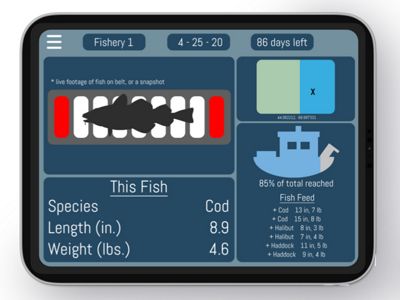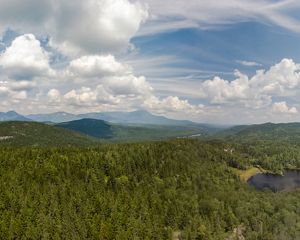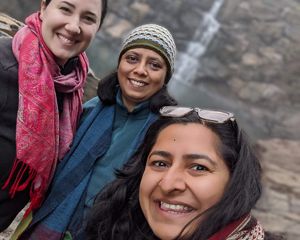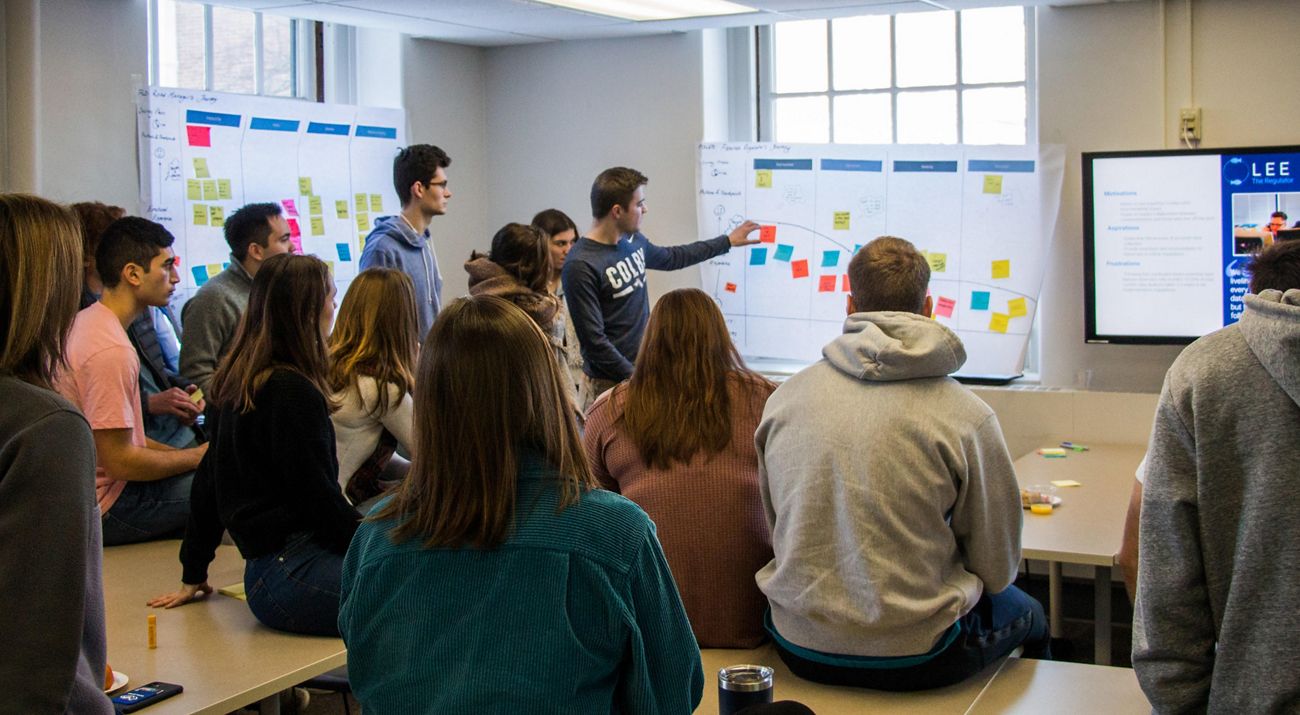
Designing for the Future
A unique class helps college students develop innovation skills to address real-world challenges.
Last year, Nina Naylor was asked to speak to an anthropology class about design thinking at Colby College in Waterville, Maine. Naylor is a professional designer and the founder of Amphibious, a design collective that creates digital products to meet a range of specific, real-world needs. After a successful presentation, she was invited to teach a full course on the subject during Colby's "Jan Plan"—a month when students focus and go deep on a single topic.
Naylor gave the opportunity a lot of thought. If she took this on, she knew she’d be starting from scratch. Design thinking is increasingly recognized by industry as a valuable approach to designing products that are more intuitive and responsive to user needs, but it’s not yet taught at most liberal arts colleges. She’d need to create a course description, a full lesson plan, and to provide a truly immersive experience, a selection of problems in need of solutions that could be the basis for fictionalized client projects for the students.
Understanding Environmental Challenges
Fortunately, Naylor also happens to be married to Alex Mas, The Nature Conservancy in Maine's associate state director and director of conservation. Mas understands well the many environmental challenges Maine faces today–challenges TNC works every day to address–and he suggested that a number of those challenges could be ripe areas for Colby students to explore.
Quote: Nina Naylor
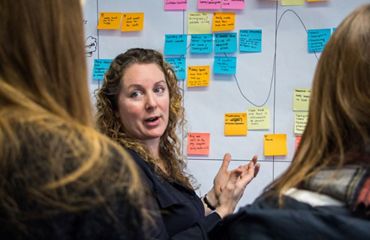
Design thinking is all about challenging your mindset, pushing away assumptions and having empathy for whomever you’re working to help.
As the January term began, 18 students were enrolled in Naylor’s new course—Design Thinking and Product Innovation. On the first day, they filed into a space where they could move, place stickies on the walls, huddle in small groups,and review each other's ideas on screens around the room. This was no lecture hall—for the next month, it would become a pop-up design studio.
"I wanted to create a journey for the students," explained Naylor, "and show them that sometimes you need to pull things apart to see new patterns. Design thinking is all about challenging your mindset, pushing away assumptions and having empathy for whomever you’re working to help."
With a concentrated schedule jammed into just four weeks, Naylor wanted the students to learn principles of design thinking, like beginning with empathy and a tolerance for failure, and to simulate the real-world experience of working with project teams on a deadline. They would end the course with an interactive product prototype, but the real goal was to dive in and experience the process.
Finding Real-World Solutions
Students divided into groups, several of which worked closely with TNC staff and partners in Maine to understand key ecological problems and how they might be addressed. One group worked on solutions to help groundfishermen and fisheries regulators to better track fish stocks in the Gulf of Maine; another focused on assisting town managers working to keep roads safe during increasingly severe storms; a third worked to help solar installers understand the impact of their products. (The other groups worked on healthcare projects, both of which have become dramatically relevant as the world grapples with the coronavirus pandemic.)
Quote: Dr. Jocelyn Runnebaum
We need young people to bring innovation in creative ways.
The group working on groundfish in the Gulf of Maine were on the "Pisces" project. After interviewing TNC staff and partners about their work with fishermen to collect better data on fish populations, the team developed plans for a potential app that would use facial-recognition technology to track catch in real time and indicate how close fishermen are to their permit limits. The app would also provide regulators with more accurate data to help assess the health of the fishery.
Senior Dominic Giardini from the Pisces team reflected on the experience of interviewing TNC staff and others focused on fisheries challenges. "I did not realize how much knowledge I would gather about the field of fisheries management,” Giardini said. "Many of my assumptions about the industry were challenged."
Dr. Jocelyn Runnebaum, TNC Maine's fisheries project manager, was one of the experts interviewed by the team. "Helping the next generation of problem solvers learn about these conservation challenges is an investment in the future," says Runnebaum. "We need young people to bring innovation in creative ways."
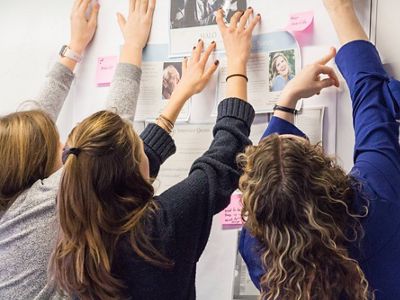
Pisces teammate Sophie Nacht summed up her appreciation for the way the class focused on real-world issues. "Nobody in that classroom was simply designing a product, but rather looking for a solution to a real problem," she said. "In studying the environment, it is easy to fall into a negative mindset. This course was particularly refreshing because we could look one problem square in the eye and say, 'Hey, I can’t solve everything, but I can solve this.'"
Preparing the Next Generation
Ultimately, Naylor knows this is just the beginning of a learning journey for these students, but she was encouraged to find out that a number of them are now thinking about possible careers in this field. “The world is facing increasingly complex and difficult problems,” Naylor said. “I hope that some of my students will now be better equipped to help solve them.”
